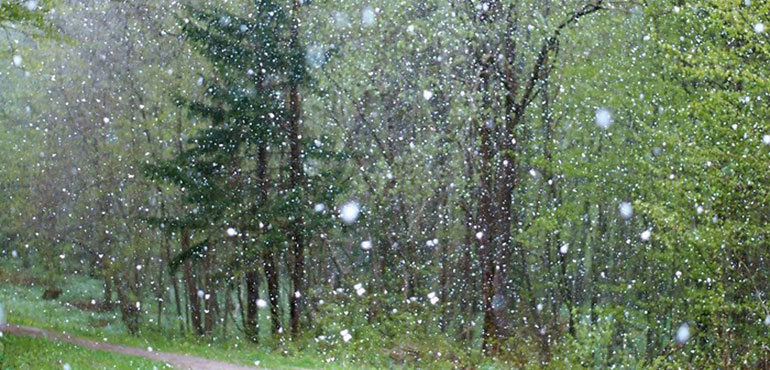
By WeatherBug Meteorologist, Matt Mehallow
As the calendar flips to March, the month is anticipated to lock into a consistent El Niño pattern across the nation with cold and wet weather for the West and a warm and active pattern in the East.
Friday will be a wet day for the Deep South, as a round of scattered showers and thunderstorms will develop across the region. There will be no rest for the weary on the West Coast too as rain and snow batters the region, with snow showers also pushing through the northern Rockies.
Most of the Western U.S. will see more unsettled weather on Saturday as widespread snow and rain showers spread into the interior. Residents along the Gulf Coast and the Southeast will need to dodge scattered rain showers, though much of the nation’s midsection will likely enjoy dry weather.
Sunday and Monday will feature active weather across the Great Plains. A strong surface low will move across the northern Plains, with a trailing cold front extending from the upper Great Lakes southwest into the southern Plains. This will lead to the potential for a major winter storm across the northern Plains, from Montana into the Dakotas and Minnesota.
To the south, southerly low-level flow ahead of this system will allow for modest instability to develop to the east of a dryline and ahead of the cold front across parts of the southern Plains to the Mississippi Valley. Severe storms may develop along the cold front from the Mid-Mississippi Valley to the Upper Mississippi Valley. Scattered rain and thunderstorms appear likely across much of the Mississippi Valley and Southeast each day. Elsewhere, snow and rain persist over much of the West on both Sunday and Monday.
The rest of the second week and the third week of March look to have a similar weather pattern. Most likely, Pacific weather systems will push onshore from near the Pacific Northwest to northern California every several days. Each system will move eastward into the northern and central Rockies, before sliding into the central Plains. Rain would be found at the coast and valleys, while snow would pile up in the mountains and higher elevations.
These systems will likely strengthen while tracking into the Mid-Mississippi Valley, Great Lakes, and Northeast. The presence of a cold front moving across the central and eastern U.S. will likely tap into warm, moist air from the Gulf of Mexico, fostering the potential for thunderstorms and severe weather in the Southern Tier.
On the flip side, enough cold air pouring in the Northern Tier could lead to snow or a wintry mix of snow, sleet, freezing rain. The last week or so of the month may see more weather disturbances zip across the southern to central half of the U.S., while drier and more settled weather is in store for the northern half.
Overall, the month of March is forecast to have much above normal temperatures across the Northern Tier. Near average temperatures are likely to be centered over central Plains to the Upper Mississippi River Valley, and below normal temperatures across the Southern Tier. Precipitation anomalies will be average normal for southern California into the Southwest, Central Plains, Southeast, and the Mid-Atlantic seaboard. Areas of the Pacific Northwest through the Northern Rockies to the northern Great Lakes should see near to below normal precipitation.
-------
Image by SeagullNady from Pixabay



